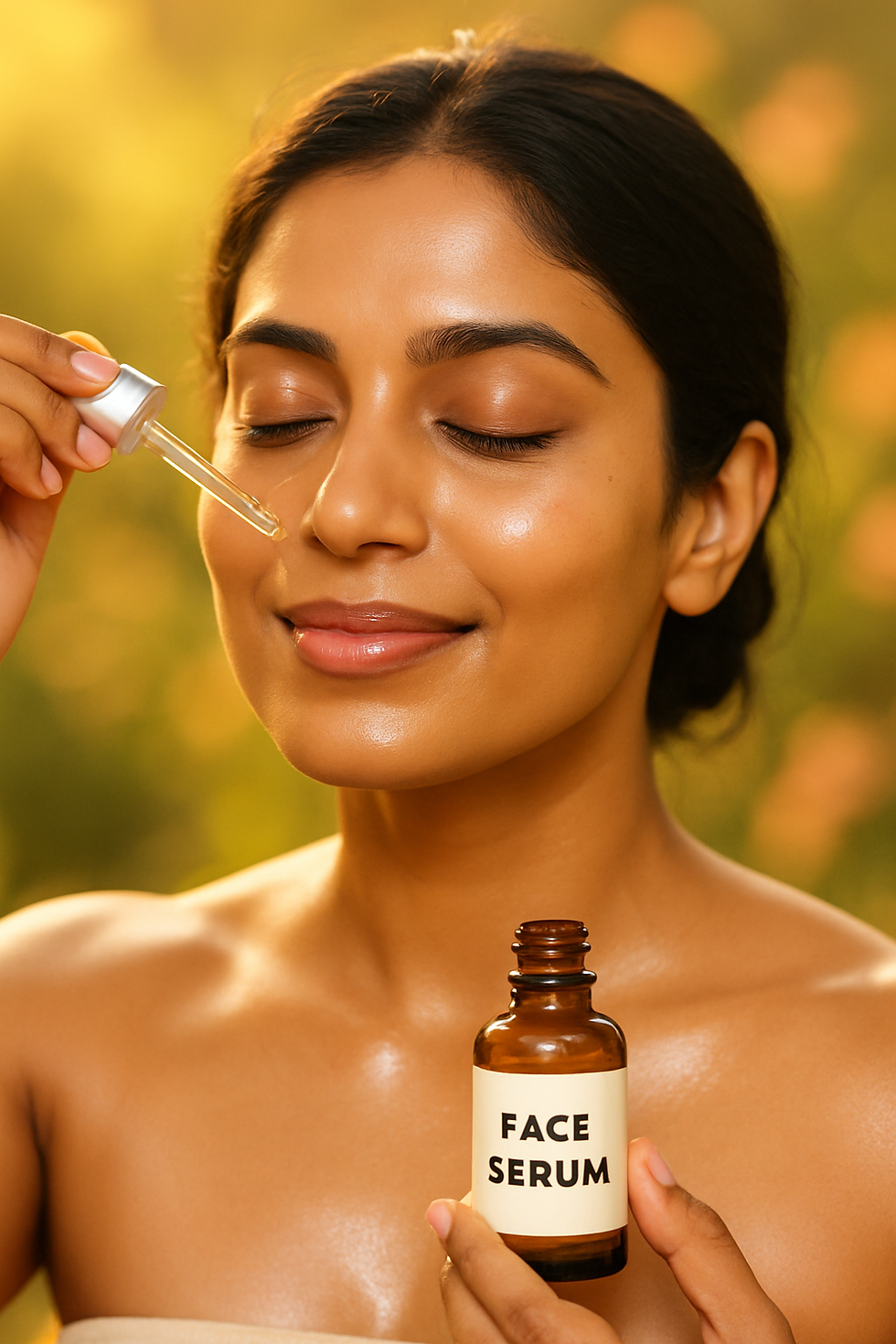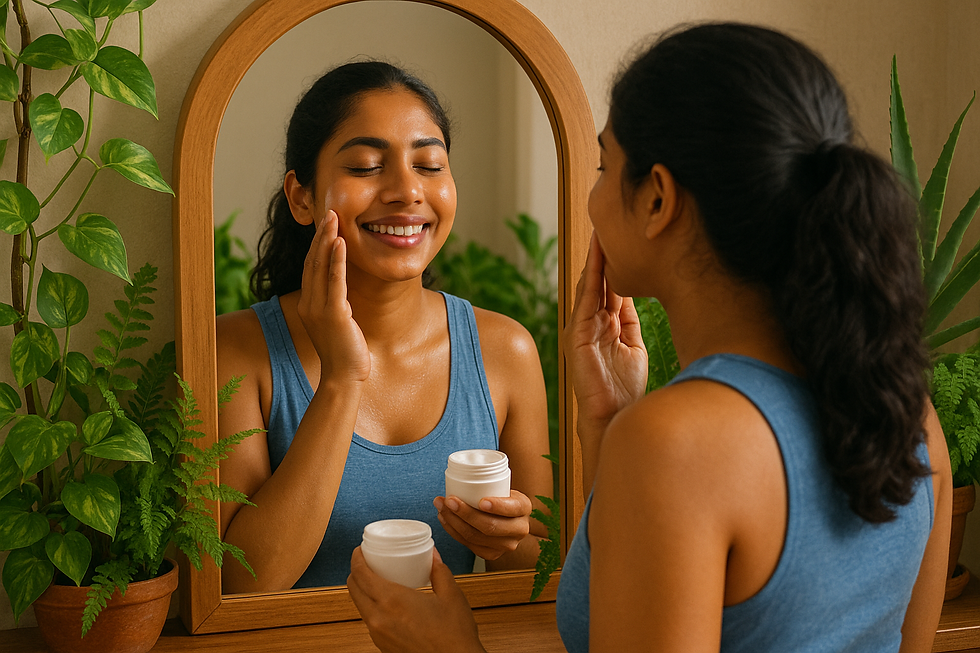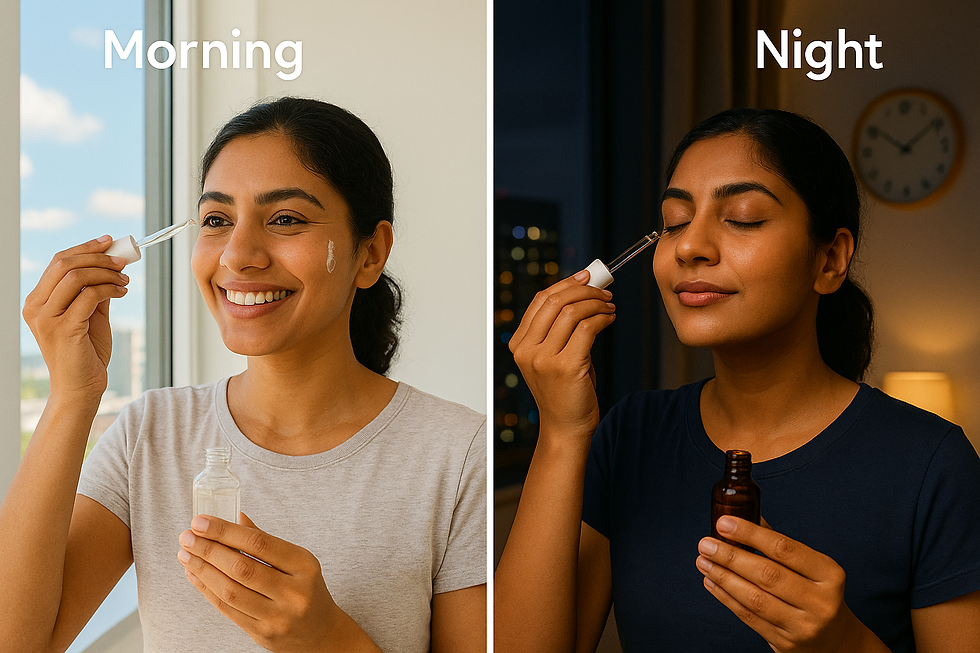Ultimate Guide to Face Serums: Uses, Benefits & How to Choose the Right One
- BigDigits Business
- Jul 25
- 3 min read
Updated: Jul 26

1. Introduction
If you're looking to take your skincare to the next level, a face serum might be your game-changer. Known for their lightweight texture and powerful ingredients, face serums are designed to deliver targeted results whether it’s fighting wrinkles, fading dark spots, or giving your skin that healthy, radiant glow.
But with so many options out there, it’s easy to get overwhelmed. This guide breaks down what a serum does, how to use it, which type suits your skin, and how to avoid common mistakes perfect for beginners or skincare lovers looking to refine their routine.
2. What is a Face Serum?
A face serum is a concentrated, fast-absorbing liquid that contains active ingredients aimed at specific skincare concerns. Unlike heavy creams or lotions, serums are formulated with smaller molecules, allowing them to penetrate deeper into the skin and deliver faster, visible results.
3. Benefits of Using a Face Serum
Using a face serum consistently can help with:
Brightening dull skin with antioxidants like Vitamin C
Reducing fine lines with anti-aging ingredients like peptides or retinol
Hydrating deeply with hyaluronic acid
Improving skin texture and overall tone
Clearing acne with niacinamide or salicylic acid
Learn more: How to Use Face Serum Correctly
4. Different Types of Face Serums
Here are the most popular types of face serums and what they’re used for:
Vitamin C Serums – Brightens and protects from sun damage
Hyaluronic Acid Serums – Attracts and retains moisture
Retinol Serums – Reduces wrinkles and fine lines
Niacinamide Serums – Reduces inflammation and acne
Exfoliating Serums – Contains AHA/BHA for smoother texture
5. How to Use a Face Serum Correctly
Here’s a step-by-step guide:
Cleanse your skin thoroughly
Apply toner (optional)
Use 2–3 drops of serum and gently pat it into your skin
Let it absorb for 1–2 minutes
Follow with moisturizer and sunscreen (if in the morning)
Full routine guide: Face Serum Routine for Beginners
6. Morning vs. Night Serum – When to Apply
Morning serums (like Vitamin C) protect against sun and pollution
Night serums (like retinol or peptides) repair the skin as you sleep
Discover the difference: Morning vs Night Serums – Key Differences

7. How to Choose the Right Serum for Your Skin Type
Skin Type | Recommended Serum Type |
Dry Skin | Hyaluronic Acid, Squalane |
Oily Skin | Niacinamide, Tea Tree |
Acne-Prone | Salicylic Acid, Zinc |
Aging Skin | Retinol, Peptides |
Dull Skin | Vitamin C, Licorice Root Extract |
Sensitive Skin | Centella Asiatica, Chamomile |
Always patch-test a new serum and avoid layering too many actives at once.
8. Common Face Serum Mistakes to Avoid
Even the best serum won’t work if you make these common mistakes:
Using too much product
Mixing ingredients that don’t go together (e.g., Vitamin C + AHAs)
Skipping moisturizer after serum
Not applying sunscreen during the day
Using actives too frequently
Avoid these issues: Common Face Serum Mistakes to Avoid
9. Conclusion
A face serum isn’t just another skincare trend it’s a targeted, high-performance step that can truly transform your skin. Whether you're struggling with dryness, dullness, acne, or aging, there’s a serum out there made for you.
By understanding the types of face serums, learning how to use them, and choosing the one suited to your skin type, you can build an effective skincare routine that delivers long-term results.
Ready to glow? Start with a trusted option like our Vitamin C Face Serum and experience visible radiance.




Comments